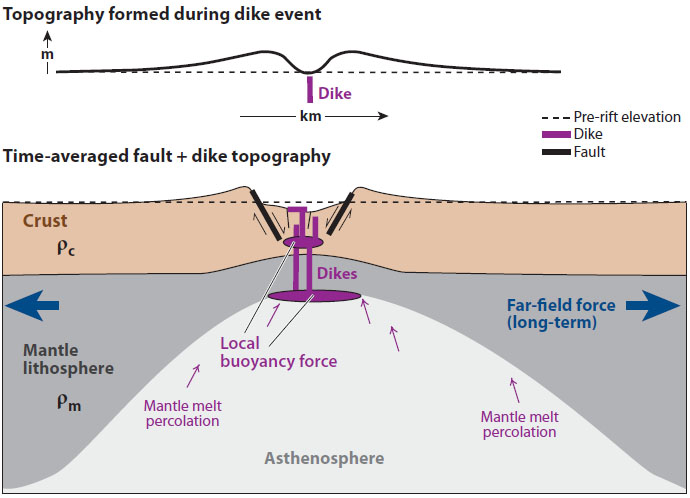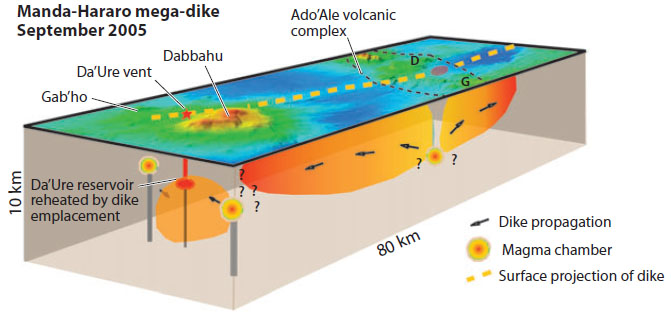Length and Timescales of Rift Faulting and Magma Intrusion: The Afar Rifting Cycle from 2005 to Present by C.Ebinger et al, 2010

Figure 1: Cross section through a rift zone showing faulting and magmatic processes (for more details see the main paper.)
Non-technical summary
It has been known for some time that plate spreading at mid-ocean ridges is achieved by a combination of faulting and magmatic processes (these are processes relating to the formation, intrusion and eruption of molten rocks) and that these ridges are divided into segments. Spreading across a mid-ocean ridge is not constant but occurs in short rifting episodes. These episodes are rarely observed, however, a major rifting event along the Dabbahu segment of the Red Sea rift in Afar, Ethiopia began in September 2005.
This event has been studied using a variety of techniques including seismic data (the study of the waves of energy released during earthquakes), satellite imagery and ground-based studies on the structure and composition of the rocks.
So far there have been thirteen dyke intrusions (thin, vertical intrusions of magma that only occasionally reach the surface to produce eruptions). Most of the magma for these dykes comes from one or more magma chambers at about 10km and 5 – 7.5km depth beneath the centre of the rift segment.
Rifting along the plate boundary is accomplished by magma from these central chambers being transported along the axis of the rift by dykes. It is the existence of these individual chambers, rather than a single magma source supplying the entire length of the plate boundary, which result in the segmentation of the rift zone.
Each dyke intrusions produces faulting of rocks at the surface. The amount of movement on these faults can be used to estimate the number of episodes of rifting that have occurred and how long it has taken the topography of the rift to develop. Less than four hundred rifting episodes over the last 200,000 years, with one episode occurring about every four hundred years, accounts for the topography across the segment. The average spreading rate is 16mm per year.
Comparision of the Afar volcanic activity with that in Iceland suggests the intensity of eruptions will increase. Recognition that 65-km-long swathes of land could be sites of eruptions during rifting episodes requires large-scale monitoring and the development of a new generation of hazard models for volcanic rifts.

Figure 2: The Dabbahu rift segment showing surface topography, magma chambers and dykes. The arrows show the direction of magma movement.
Full paper (PDF file)
